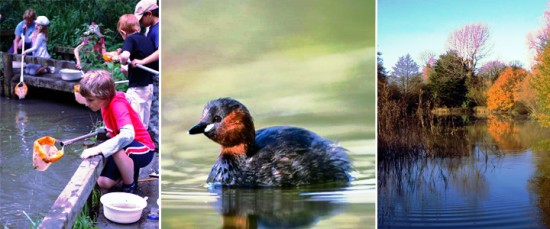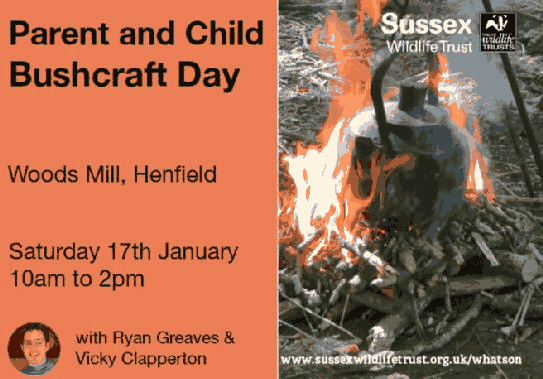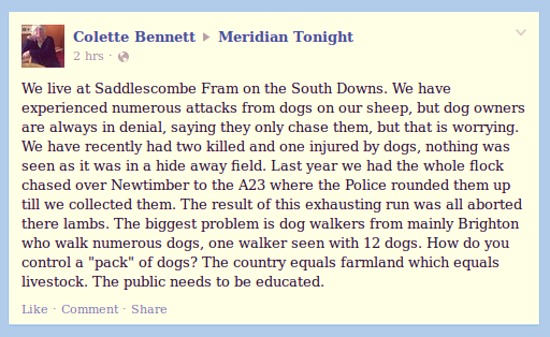With blackthorn and wild plum in blossom, early butterflies on the wing and also kestrels and buzzards to spot. April is a magical time to visit Woods Mill as spring takes hold at a galloping pace. A mixture of woodland and meadow with good views of the South Downs, this peaceful nature reserve near Henfield is centered around a large reed-fringed pond.
Mute swan, little grebe and heron can all been seen on the pond and you may even be lucky enough to see a flash of a kingfisher. Removal of fish a couple of years ago has rejuvenated the pond. The water is now clear enough to see the tadpoles of the frogs and toads and grass snakes bask on its sunny banks.
Over the Easter school holiday, we will be running regular drop-in pond dipping sessions with the Woods Mill Warden on-hand to help you find out what you have caught. Newts, water boatmen and dragonfly nymphs all thrive in the numerous ponds.
Woods Mill is free to visit. It has a car park, public toilets and a wheelchair friendly all-weather path .. but no dogs are allowed on the nature reserve.
Category Archives: Fauna
Wolstonbury in winter
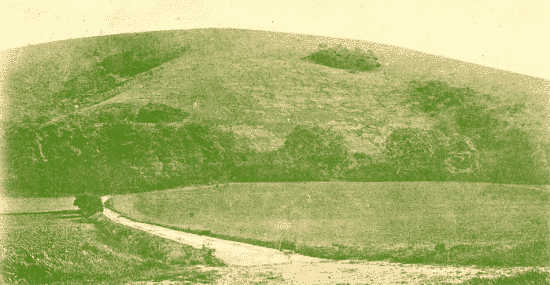
A guided walk exploring the woods and ancient downland of one of the most remarkable hills on the South Downs. Here you will discover ancient beech trees, a mysterious history and a bizarre lunar landscape created by billions of ants.
Booking not needed. Sunday, 11th January 2015, 10:00am — 1:00pm, all tickets £3. Meet at Clayton recreation ground, just off the A273. More Information: Graham Wellfare, 01273 857712, graham.wellfare@nationaltrust.org.uk.
How to Engage in the Planning Process for the Benefit of Wildlife
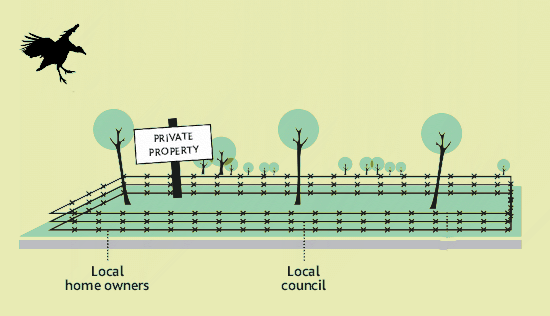
[If you are planning to convert your field into a campsite, or trying to stop someone else from doing so, then this brief tutorial may be just what you need.]
Laura Brook and Jess Price look at how to engage with planning processes and its impact on wildlife with reference to biodiversity legislation and how to respond to planning applications on biodiversity grounds: (i) an introduction to the planning system in England and key biodiversity legislation & guidance; (ii) the process involved in responding to a planning application on biodiversity grounds; and (iii) some examples of planning applications. A basic run through of the planning system in England and key biodiversity legislation and guidance. An outline of the process involved in responding to a planning application on biodiversity grounds. The course will be run from an ecological stand point and will not cover other planning issues.
Woods Mill, Thursday 12th February, 6:30pm–9:00pm. Book here.
Break the ice
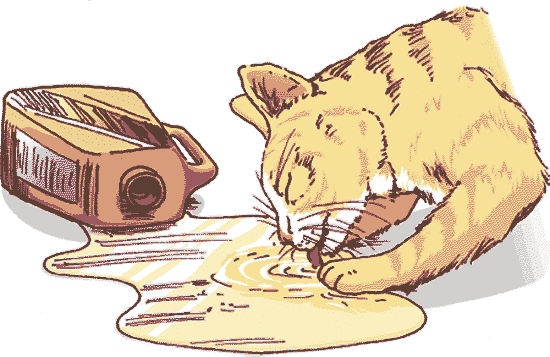
Ethylene glycol is highly toxic to domestic animals and wildlife. Please do not put antifreeze in your water feature. If you have a solar water heating array on a roof, check that there are no leaks. Please do not pour old antifreeze solution into a storm drain or watercourse.
Clive Goodridge
Do you recognise this cat?
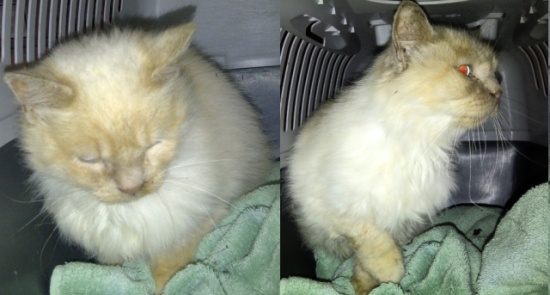
Is this your cat or do you recognise it? It was found curled up asleep behind a bulk bag of sand (and not wanting to move) in a driveway at the top of Clappers Lane. It has no collar on so cannot be identified – please bear this in mind if you are a cat owner. It is smallish, creamy colour with hint of ginger and longish fur.
We’re going to Brighton shortly to get it chip read (if it has one) – we may need to leave it there as it doesn’t seem that well.
Please ring Kate or Clive on 795 if you can help.
UPDATE: cat now reunited with owners.
Wild Woodies Spring Holiday Club

Tuesday 31st March 2015 from 9:00am to 4:00pm. Use a net to dive into the watery depths of the Woods Mill pond in search of water boatmen and newt tadpoles and learn all about the fascinating world of mysterious moths as we open the moth trap to see what we have found. Spend time at the camp site and practice safe fire lighting to make your own hot drink. Delve into the woodland undergrowth to find spiders and snails. Use natural materials to make a giant sculpture in the woods and make your own model to take home. The event is intended for children aged 6-11 years.
Parents are excluded but they are, of course, expected to pay and to provide transport, snacks, a packed lunch, and something to drink. Book now.
And hang a pearl in every cowslip’s ear
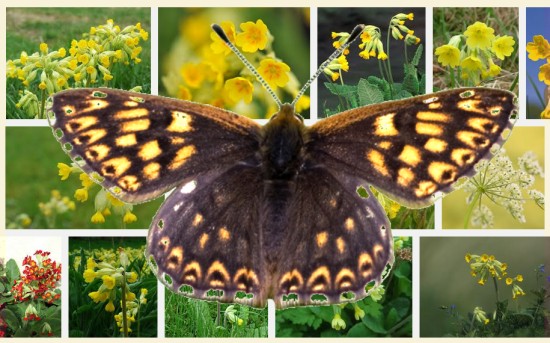
The Duke of Burgundy butterfly is one of the most rapidly declining and threatened species of butterfly in the UK. Numbers have crashed by over 50 per cent since the 1970s and only about 100 colonies remain. In 2003, just eight Duke of Burgundy butterflies were recorded in the whole of Sussex. Over the next two years, Neil Hulme and Steyning Downland Scheme volunteers will be planting cowslip to encourage the Duke of Burgundy back to the chalk grasslands of the Steyning Downland. Neil has already been successful in seeing the Duke of Burgundy return to Chantry Hill, about nine miles west of the Steyning Downland. There will be opportunities for local people to work with Wakehurst Place/Kew; to collect cowslip seed and grow cowslip plants; to learn how to identify and monitor the butterflies; and to conserve their habitat. Anyone who is interested should go to the free launch event at the Steyning Centre at 7:00pm on Monday 8th December to find out more. More here.
Mud on the Downs
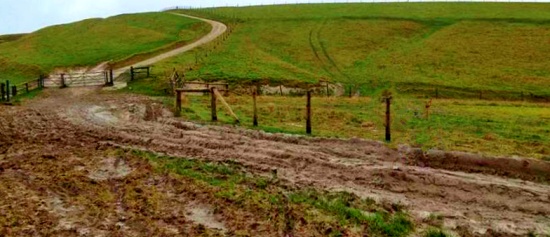
Charlie Cain, the National Trust’s Head Warden for the South Downs, writes:
The situation is not ideal and it is our intention to remove the cattle as soon as we can. The grass growth this year has been exceptional due to the long summer and we need to keep it under control. The grazing of cattle is the most effective natural way of doing this. The excessive rainfall this autumn has made the situation worse. The grass is still growing and the cattle are causing more damage because the ground is so soft.
I am regularly monitoring the condition of the paths. We intend to replace the cattle with sheep for the winter but at the moment sheep would not consume enough grass. I am unable to predict exactly when this will happen. It will depend on how much the grass continues to grow.
As regards fencing, we have let some of the fences fall into disrepair lately. This is because a larger area is more-efficiently grazed by cattle. When a fence is situated up and down the hill you tend to get more ungrazed areas because you change the grazing pattern of the animals. Our plans for next year however include splitting the Fulking hillside into three paddocks. This may make it easier to control damage to paths because we will be able to move cattle away from the worst-affected areas.

